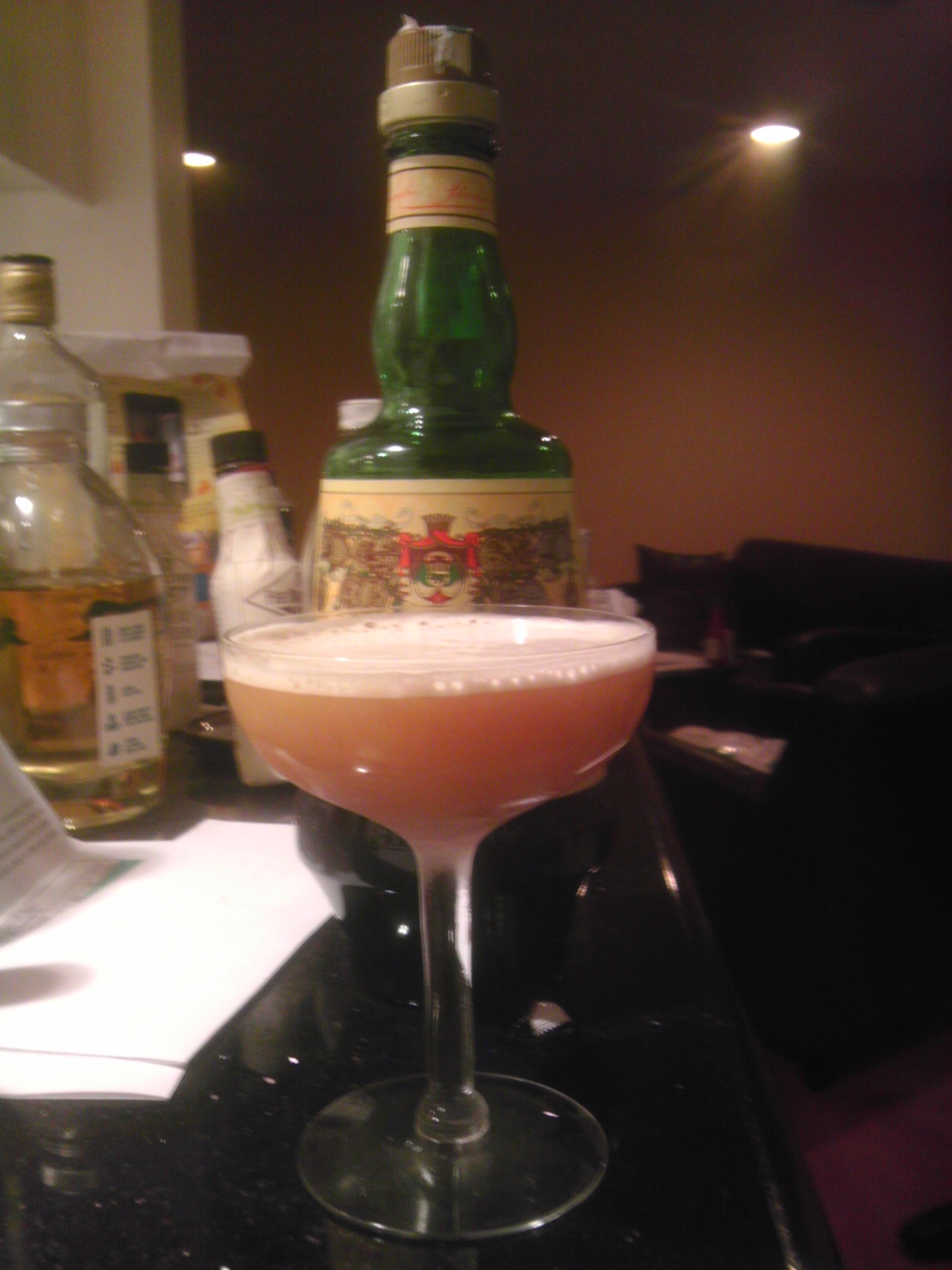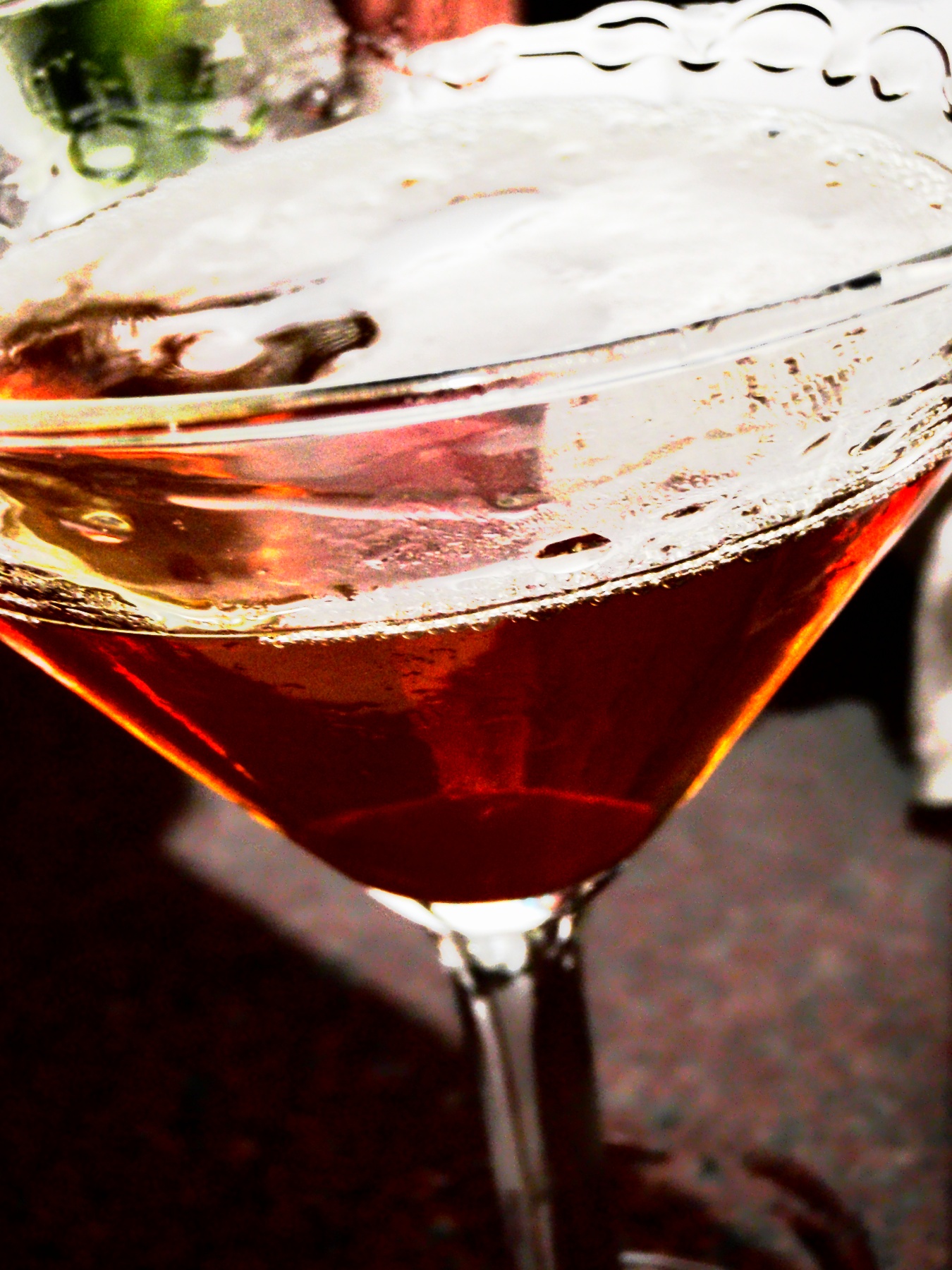Drink of the Week: The Montenegro Sour
 Lately, we’ve been featuring a few cocktails made with really good booze sent to me by the dark forces of the liquor-industrial complex. Today’s post is a bit different as the much appreciated gift of free booze came not from some shadowy Sidney Falco, but from Ron Shishido, a very old junior high/college buddy who’s probably taught me how to appreciate a good booze concoction as much as anyone else on this planet, including Rachel Maddow.
Lately, we’ve been featuring a few cocktails made with really good booze sent to me by the dark forces of the liquor-industrial complex. Today’s post is a bit different as the much appreciated gift of free booze came not from some shadowy Sidney Falco, but from Ron Shishido, a very old junior high/college buddy who’s probably taught me how to appreciate a good booze concoction as much as anyone else on this planet, including Rachel Maddow.
Amaro Montenegro is, on it’s own and served neat, quite a lovely drink. It’s a member of the amaro family of bittersweet liqueurs which occasionally pop up in cocktails. It’s popular enough in Italy to be featured in a series of slick commercials of the kind we use to sell highish-end beer in the States, and that’s for a reason. With a hard-to-pin down but relatively fruity flavor, it’s a kinder, gentler, vastly more drinkable brew than, say Torani Amer or the superior — but still two-fisted — Amaro CioCara. As bitter digestifs go, this one’s pretty sweet.
Perhaps because it’s so readily drinkable all on its own, I had a hard time finding a cocktail made with this particular amaro. However, Food and Wine bloggers Carey Jones and John McCarthy came to the rescue with a few recipes. I chose one featuring my all-time favorite non-alcoholic cocktail ingredient, egg white.
I’m not sure the drink is so accurately named, however. Whatever alleged citrus flavor there is comes from the mysterious herbal blend from which Amaro Montenegro is made, so it’s really more bitter, in a good way, than sour.
On the plus side, that means no potentially messy juice squeezing is required this time around and that definitely speeds up the cocktailing process. That’s good because I’m breaking my usual rule against recipes requiring home-made syrups. Yes, there’s a tiny bit of extra work involved, but be bold and read on.
The Montenegro Sour
1 ounce Montenegro Amaro
1 1/2 ounces bourbon
1 fresh egg white or equivalent (see below)
1/2 ounce honey syrup (see below)
1 dash aromatic bitters, Angostura or similar
Combine the Amaro Montenegro, bourbon, syrup, and bitters in cocktail shaker. First, as always with egg or egg white cocktails, we do a “dry” shake without ice to emulsify it. Then, we shake again, very vigorously and with plenty of ice, and strain it into a chilled cocktail glass or smallish rocks glass. We then enjoy this delightfully refreshing beverage and toast our amaro’s namesake, Princess Elena of Montenegro, the World War II-era queen consort of Italy known, for the most part anyway, for her good works.
****
Despite the fact that I often tell publicists with recipes that make-it-yourself syrups are off the table, I decided to make an exception this week for a couple of reasons.
First. the honey syrup for this recipe is ridiculously easy to make. Just mix equal parts honey and hot water, then stir. I put 1/4 cup of honey and that much water in the microwave for 30 seconds, stirred the stuff, and then put it in the freezer for a few minutes so it wouldn’t be too hot. Low on both muss and fuss.
The second reason we’re using the honey syrup is that I actually tried this drink more than once with my usual Master of Mixes Simple Syrup and it just didn’t do the trick. Too simple. Apparently, you need that little bit of honey flavor to complement the bourbon and amaro.
I used three different brands of bourbon. The always outstanding 80 proof Basel Hayden’s yielded a nectary result that went down very easy indeed. 94 proof Wathen’s, a brand that’s I recently bought out of curiosity and which I’m quite liking, produced a boozier, but also more full bodied, result.
Finally, there was the version using an old DOTW favorite that’s been returning to my local stores of late, “bottled in bond” 100 proof Old Fitzgerald, which remains the best bourbon bargain I’ve found at, in my case, less than $15.00 for a bottle. It produced a sweet, tangy, and very punchy attitude adjuster that, at that particular moment, was very much what the doctor ordered. Admittedly, however, that doctor would not be a liver specialist.
Finally, I have to add a few more words on the enormous power of egg whites to really transform a drink. Contrary to the common assumption, whites in drinks are not even slightly slimy but add a smooth, almost milky, froth to a drink. The froth smooths over the rough edges of the other flavors and unites them as well as anything I’ve ever experienced.
Still, many folks resist, and not all of their reasons are bad. I’ve been talking to an expert or two lately about what I still believe are the very low risks of using raw egg white. However, I’ve been told that, for people who are concerned, caution may still be in order especially right now for a number of reasons, cost-related reductions in government inspection among them, no doubt. (God forbid big government should stand in the way of a microbe’s ability to grow and prosper in a free-market environment.)
I just crack open a large egg and maybe wash the shell first. However, people with real health concerns of any kind about this should very definitely consider using about 1-1.5 ounces of one of the many brands of pasteurized egg white on the market.
You can follow us on Twitter and Facebook for content updates. Also, sign up for our email list for weekly updates and check us out on Google+ as well.

 I was a little under the weather and teetotaling last week, and so I found myself late this weekend with a decision. I could take a week off from our little weekly get together. I could make a drink exactly once or maybe twice and call it a day…something I really don’t like to do. Or, I could fall back on a drink I frequently make that I somehow haven’t written up here before.
I was a little under the weather and teetotaling last week, and so I found myself late this weekend with a decision. I could take a week off from our little weekly get together. I could make a drink exactly once or maybe twice and call it a day…something I really don’t like to do. Or, I could fall back on a drink I frequently make that I somehow haven’t written up here before.









